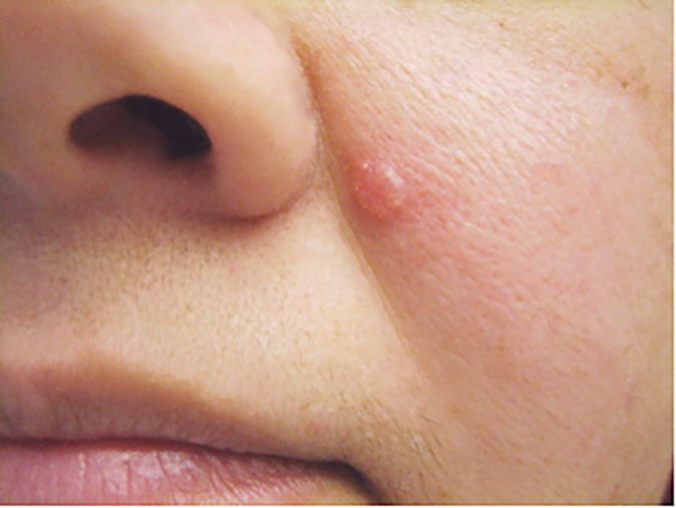BASAL CELL NEVUS SYNDROME

What is basal cell nevus syndrome?
Basal cell nevus syndrome (BCNS) is disorder that affects the skin with multiple basal cell carcinomas (BCCs) and pinpoint pits in palms and soles of feet. In addition there is a variable expression of abnormalities in various body systems including the skeletal malformations, soft tissue, eye, central nervous system and endocrine changes. The disease begins in early childhood or adolescence and affects mostly Caucasians with an equal sex incidence. Most BCCs occur on sun-exposed areas of the skin. Characteristic features of the disease include:
- Nodular, ulcerating and hardened BCCs
- Small pits on the palms and soles
- Tumors (small skin-tag like tumors) on eyelids, armpits and neck
- Large prominent forehead (frontal bossing)
- Widely spaced eyes
- Cysts on the mandible (jaw bone)
- Scoliosis
- Strabismus (misaligned eyes)
- Cataracts
What causes basal cell nevus syndrome?
The disorder is inherited in an autosomal dominant fashion meaning that a child of an affected parent carrying the gene will have a 50% chance of getting the disease. BCNS is caused by a mutation in a gene leading uninhibited cell growth and formation of tumors. Ultraviolet light radiation is thought to help promote BCC formation in these patients.
What are the implications of basal cell nevus syndrome?
The significance of the syndrome is that a large number of skin cancers create a lifetime problem and patients must be vigilant.
How is basal cell nevus syndrome treated?
Treatment of BCNS involves surveillance of skin lesions and treatment of associated findings. This may include oral surgery for those with mandibular cysts, surgical excision of tumors, photodynamic therapy for multiple BCCs and topical anti-cancer agents.
References:
Wolff K, Johnson, RA. Fitzpatrick’s Color Atlas and Synopsis of Clinical Dermatology. Sixth Edition. 2009.


